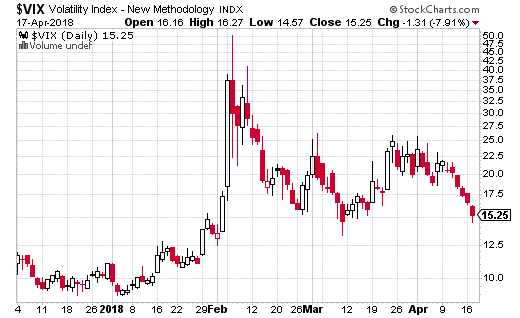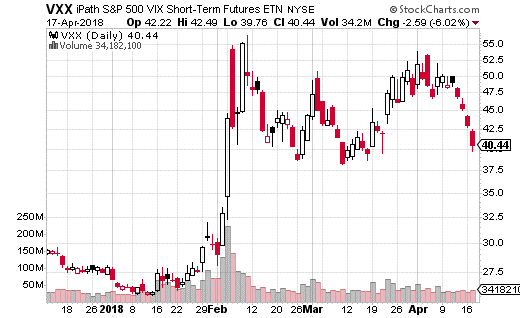For the last couple years, perhaps no investing strategy was more popular than shorting volatility. The short volatility trade was the primary source of yield for many investors, both institutional and retail. With interest rates so low, selling volatility seemed like one of the few easy ways to generate consistent income.
There are several different ways to sell volatility, but using short VIX ETPs (exchanged traded products) was definitely the most popular, at least for the retail crowd. No doubt, institutions used these ETPs as well, but they also had access to several other products in the space (volatility swaps and other OTC instruments, VIX futures, etc.).
There certainly was evidence that mom-and-pop traders were using the short VIX ETPs to sell volatility. (And don’t forget the manager from Target who quit his job to start his own volatility selling fund.) Which is why when volatility exploded on February 5th, many non-institutional investors got hurt. The short volatility ETPs either imploded (XIV) or were substantially defanged (SVXY).
And then market volatility stopped going down.
You probably know the story. VIX (the Cboe’s S&P 500 volatility index) shot up above 20, which is roughly the long-term average, and it stayed there basically for two months. Of course, the VIX – a measure of implied volatility – shot up because realized volatility was also way up (i.e. the market was moving around a lot). However, it’s pretty clear that the lack of volatility sellers, and far fewer easy choices for selling volatility, added to the slow (or lack of) mean reversion.
At least until recently. Finally this week, the VIX dropped all the way to below 15, a level not seen since before the February 5th selloff. Does that mean the short volatility trade is back? We won’t know until we have a few more weeks of data, but at least volatility is beginning to behave like things are going back to normal.

What’s more, at least one big trader is betting a hefty sum that short volatility is the place to be right now. The trade is betting on volatility either dropping or staying where it is by selling calls in iPath S&P 500 VIX Short-Term Futures ETN (NYSE: VXX). VXX is the most popular ETP for trading short-term volatility.
To take a short position in short-term volatility using options, the easiest thing to do is buy puts on VXX. The next easiest thing to do is selling calls in VXX. Of course, with call selling you don’t have to have VXX go down, you just don’t want it to come back up. On the other hand, the risk is much higher when selling calls than with buying puts.

Anyhow, in this case, the trader chose to sell calls, over 17,000 of them in fact, with a June 1st expiration. With VXX at $40, the trader sold the 55 calls for $0.73. He or she collected over $1.2 million in premiums. Breakeven is $55.73, which is obviously quite a bit higher than where we currently are.
Even though $55 in VXX is an unlikely level to hit by June 1st, keep in mind that volatility moves really fast (just glance at the beginning of February in the chart above for a very clear example of this). Plus, there’s unlimited risk on this trade if volatility were to spike and remain high. That’s why I’d rather buy puts to sell volatility.
For example, the May 18th 38 puts (the 30-delta puts) are trading for around $1.50. VXX needs to get to $36.50 for them to start making money but that’s very possible over the next month. Additionally, the most you can lose is the $1.50 per contract you spend on premiums.
[FREE REPORT] Options Income Blueprint: 3 Proven Strategies to Earn More Cash Today Discover how to grab $577 to $2,175 every 7 days even if you have a small brokerage account or little experience... And it's as simple as using these 3 proven trading strategies for earning extra cash. They’re revealed in my new ebook, Options Income Blueprint: 3 Proven Strategies to Earn Extra Cash Today. You can get it right now absolutely FREE. Click here right now for your free copy and to start pulling in up to $2,175 in extra income every week.